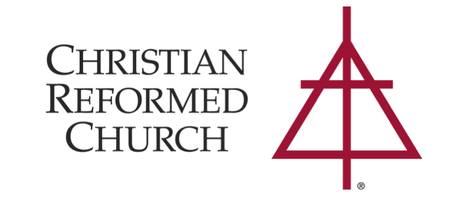The New Testament is a collection of Christian texts that comprise the second section of the Bible. It is a significant part of the Bible as it introduces the life, teachings, and ministry of Jesus Christ. But where does the New Testament begin?
The New Testament starts in the Bible right after the Old Testament. More specifically, it begins with Matthew, the first book of the New Testament. The transition from the Old Testament to the New Testament marks a significant shift in the Bible’s message, influencing the development of Christianity and its teachings.
Key Takeaways
- The New Testament is the second section of the Bible and starts after the Old Testament.
- Matthew is the first book of the New Testament.
- The transition from the Old Testament to the New Testament marks a significant shift in the Bible’s message and influences the development of Christianity and its teachings.
The Structure of the Bible
Understanding the structure of the Bible is key to comprehending the organization and composition of its contents. The Bible consists of two main sections: the Old Testament and the New Testament. The Old Testament contains 39 books written mainly in Hebrew, while the New Testament comprises 27 books written primarily in Greek.
The Old Testament is divided into four parts: the Pentateuch (also known as the Torah), the Historical Books, the Wisdom and Poetry Books, and the Major and Minor Prophets. The New Testament is divided into five parts: the Gospels, the Acts of the Apostles, the Epistles, the General Epistles, and Revelation.
The table below illustrates the books and the divisions of the Old and New Testaments:
| Old Testament Divisions | Books |
|---|---|
| Pentateuch | Genesis, Exodus, Leviticus, Numbers, Deuteronomy |
| Historical Books | Joshua, Judges, Ruth, 1 and 2 Samuel, 1 and 2 Kings, 1 and 2 Chronicles, Ezra, Nehemiah, Esther |
| Wisdom and Poetry Books | Job, Psalms, Proverbs, Ecclesiastes, Song of Solomon |
| Major and Minor Prophets | Isaiah, Jeremiah, Lamentations, Ezekiel, Daniel, Hosea, Joel, Amos, Obadiah, Jonah, Micah, Nahum, Habakkuk, Zephaniah, Haggai, Zechariah, Malachi |
| New Testament Divisions | Books |
| Gospels | Matthew, Mark, Luke, John |
| Acts of the Apostles | Acts |
| Epistles | Romans, 1 and 2 Corinthians, Galatians, Ephesians, Philippians, Colossians, 1 and 2 Thessalonians, 1 and 2 Timothy, Titus, Philemon, Hebrews, James, 1 and 2 Peter, 1, 2, and 3 John, Jude |
| Revelation | Revelation |
Having an understanding of the structure of the Bible allows readers to navigate and study its various texts with greater ease. Moreover, it provides context for the development of Christian belief systems and underscores the importance of the Bible in shaping religious thought and practice.
The Division between the Old Testament and the New Testament
The Old and New Testaments are the two major divisions of the Christian Bible. The Old Testament consists of 39 books, while the New Testament comprises 27 books. The division between the Old and New Testaments reflects a significant shift in religious beliefs and practices.
The Old Testament tells the story of the Jewish people and the foundation of Judaism as a religion. It contains many of the traditional religious and moral doctrines that still form the basis of Jewish law and culture today. The New Testament, on the other hand, centers around the life, teachings, death, and resurrection of Jesus Christ. It describes the emergence of Christianity and its spread throughout the Roman Empire.
The division between the Old and New Testaments is not just a simple chronological transition; it is also a separation of ideas and traditions. The Old Testament represents the past, while the New Testament represents the future. The Old Testament is concerned with the law, while the New Testament is focused on grace and redemption.
This division between the Old and New Testaments is an essential element of Christian theology and tradition. It distinguishes the Jewish and Christian faiths, each with its own set of beliefs, practices, and sacred texts. Understanding this division is crucial to understanding the significance of the New Testament as a whole.
Matthew: The First Book of the New Testament
The Gospel of Matthew is the first book of the New Testament, meaning it sets the stage for the Christian scriptures that follow. It is one of four books known as the Gospels, which tell the story of Jesus Christ and his teachings.
Matthew’s Gospel is believed to have been written between AD 70 and AD 100 and is named after its author. Although the book does not directly claim to have been written by the Apostle Matthew, Christian tradition asserts that he was indeed the author.

This Gospel is written in a more structured and formal style than some of the other Gospels and draws heavily on the Old Testament. It describes the birth, teachings, miracles, death, and resurrection of Jesus Christ and presents him as the long-awaited Jewish Messiah.
And she shall bring forth a son, and thou shalt call his name Jesus: for he shall save his people from their sins” (Matthew 1:21)
Matthew’s Gospel also emphasizes the ethical and moral teachings of Jesus, including the famous Sermon on the Mount, and highlights the importance of faith and belief as essential components of salvation.
The Genealogy of Jesus
A notable aspect of Matthew’s Gospel is its opening genealogy, tracing the lineage of Jesus back to Abraham, the forefather of Judaism. This table depicts the genealogy according to Matthew:
| Abraham | Isaac | Jacob | Judah | Perez | Hezron | Ram | Amminadab | Nahshon | Salmon | Boaz | Obed | Jesse | David | |
|---|---|---|---|---|---|---|---|---|---|---|---|---|---|---|
| Obed’s mother was Ruth | Jesse was father of King David | |||||||||||||
| David was father of Solomon | Solomon was father of Rehoboam | Rehoboam was father of Abijah | Abijah was father of Asa | Asa was father of Jehoshaphat | Jehoshaphat was father of Joram | Joram was father of Uzziah | Uzziah was father of Jotham | Jotham was father of Ahaz | Ahaz was father of Hezekiah | Hezekiah was father of Manasseh | Manasseh was father of Amon | Amon was father of Josiah | Josiah was father of Jeconiah and his brothers | |
| Jeconiah was father of Shealtiel | Shealtiel was father of Zerubbabel | Zerubbabel was father of Abiud | Abiud was father of Eliakim | Eliakim was father of Azor | Azor was father of Zadok | Zadok was father of Achim | ||||||||
| Achim was father of Eliud | Eliud was father of Eleazar | Eleazar was father of Matthan | Matthan was father of Jacob | Jacob was father of Joseph |
Matthew’s Gospel serves as an essential foundation for the New Testament and Christianity as a whole. Its emphasis on the teachings and divinity of Jesus Christ and its connection to the Old Testament establishes a crucial link between the Jewish and Christian faiths.
The Gospels: Introducing the Life and Teachings of Jesus
The Gospels, which consist of Matthew, Mark, Luke, and John, are four distinct accounts of the life and teachings of Jesus Christ. Each Gospel offers a unique perspective on Jesus’s ministry and message, yet they all convey his central teachings and values. Matthew presents Jesus as the Messiah, Mark as the suffering servant, Luke as the compassionate healer, and John as the divine Son of God.
The Gospels include a variety of narratives, including parables, miracles, and interactions with individuals and crowds. These stories provide insight into Jesus’s character and mission and offer guidance for Christian living. The Gospels also contain Jesus’s teachings on topics such as love, forgiveness, and eternal life.
The Gospels’ central role in the New Testament reflects their importance as a foundation for Christian doctrine and practice. They introduce the life and teachings of Jesus Christ, whose influence has had a significant impact on the world for over two thousand years.
Comparison of the Gospels
| Gospel | Author | Date of Writing | Key Themes |
|---|---|---|---|
| Matthew | Matthew | AD 70-80 | The Messiah, the Kingdom of Heaven, Jewish tradition |
| Mark | John Mark | AD 60-70 | The suffering servant, discipleship, the nature of faith |
| Luke | Luke | AD 70-80 | Compassion for the marginalized, salvation for all people, women in ministry |
| John | John | AD 90-100 | The divine Son of God, eternal life, spiritual rebirth |
“These things are written that you may believe that Jesus is the Christ, the Son of God, and that believing you may have life in His name.” – John 20:31
The Epistles and Acts: Letters and Early Christian History
After the Gospels, the New Testament features the Epistles and the book of Acts. Written by early Christian leaders, the Epistles consist of letters to various churches and individuals, providing insight into the early Christian community’s beliefs and practices. Many of the Epistles also address challenges and controversies within these communities, offering guidance and instruction on how to navigate them.
The book of Acts, also authored by Luke, provides a historical account of the early Christian church. It details the growth of the community and the spread of Christianity, from Jerusalem to Rome. Acts also introduces important Christian figures such as Paul, outlining his conversion story, missionary work, and teachings.
The Epistles and Acts offer valuable information about the early Christian community’s beliefs, practices, and early history. They provide a glimpse into the challenges faced by early Christian leaders and the solutions they devised to address them. This body of work has helped shape modern Christian beliefs and practices and remains a significant component of Christian scripture today.
Revelation: Prophecy and the Future
The book of Revelation, also known as the Apocalypse of John, is the final book of the New Testament. It is a highly symbolic work, filled with apocalyptic themes and imagery that have captured the imagination of Christians throughout history. The book’s authorship is attributed to John the Apostle, although its writer remains a subject of debate among scholars.
The book of Revelation contains a series of prophetic visions that are believed to outline the end of the world and the Second Coming of Christ. It speaks of a final judgement and the ultimate triumph of good over evil. The book’s vivid descriptions of heaven and hell have inspired awe and fear in equal measure, and its prophecies have been interpreted in many ways throughout the centuries.
The influence of the book of Revelation on Christian doctrine and belief cannot be overstated. Its teachings about the end of the world and the return of Christ have shaped many Christian denominations and continue to fascinate scholars and believers alike.
“And he that sat upon the throne said, Behold, I make all things new. And he said unto me, Write: for these words are true and faithful.” – Revelation 21:5
The book of Revelation is a powerful reminder of the importance of prophecy in the Christian faith. Its themes of hope, redemption, and divine judgement continue to speak to believers around the world, offering comfort and inspiration in times of trial and tribulation.
Understanding the New Testament’s Impact
The New Testament has had a profound impact on Christianity and the world as a whole. Its teachings have influenced individuals and societies for thousands of years, shaping the way we think about ourselves, our relationship with God, and our place in the world. The New Testament’s impact can be seen in many areas of life, from art and literature to politics and ethics.
One of the most significant ways the New Testament has impacted the world is through its teachings on love, forgiveness, and compassion. These values are central to Christian belief and have inspired countless acts of kindness and generosity throughout history. The New Testament’s message of hope and redemption has also been a source of comfort and strength for millions of people in times of hardship and despair.
The New Testament’s impact extends beyond individual believers to the wider world. Its teachings have inspired social movements, influenced political systems, and shaped the course of history. From the abolition of slavery to the civil rights movement, the New Testament has been a catalyst for positive change and social justice.
Despite being written nearly 2,000 years ago, the New Testament continues to be relevant today. Its teachings on love, forgiveness, and compassion are as important now as they were in ancient times. The New Testament’s impact on Christianity and the world is undeniable, and its enduring legacy will continue to shape the course of history for generations to come.
FAQ
Where does the New Testament start in the Bible?
The New Testament begins with the Gospel of Matthew.
What is the starting point of the New Testament?
The starting point of the New Testament is the first book, the Gospel of Matthew.
Where can I find the New Testament in the Bible?
The New Testament is located after the Old Testament and before the Book of Revelation in the Christian Bible.
How does the Bible transition from the Old Testament to the New Testament?
The transition from the Old Testament to the New Testament represents a shift in religious and historical focus. It occurs after the Book of Malachi in the Old Testament and introduces the birth, life, and teachings of Jesus Christ in the New Testament.
What is the significance of the New Testament introduction?
The introduction of the New Testament sets the stage for the fulfillment of Old Testament prophecies, the revelation of God’s plan for salvation through Jesus Christ, and the teachings that form the foundation of Christianity.
What is the structure of the Bible?
The Bible is divided into two main sections: the Old Testament and the New Testament.
Why is there a division between the Old Testament and the New Testament?
The division between the Old Testament and the New Testament reflects a major shift in religious beliefs and historical events. It represents the transition from the Old Covenant to the New Covenant and the fulfillment of ancient prophecies.
What is the first book of the New Testament?
The first book of the New Testament is the Gospel of Matthew.
What are the Gospels?
The Gospels are the first four books of the New Testament: Matthew, Mark, Luke, and John. They provide accounts of the life, ministry, teachings, death, and resurrection of Jesus Christ.
What do the Gospels introduce in the New Testament?
The Gospels introduce the life, teachings, and ministry of Jesus Christ, providing a foundation for Christian beliefs and the teachings of the early Christian church.
What are the Epistles and Acts?
The Epistles are letters written by early Christian leaders, such as the apostle Paul, to various individuals and churches. The book of Acts provides a historical account of the early Christian church and its expansion.
What is the final book of the New Testament?
The final book of the New Testament is the book of Revelation.
What is the content and significance of the book of Revelation?
The book of Revelation contains visionary and apocalyptic literature, providing insights into future events and the ultimate victory of God over evil. It holds significant symbolism and prophecy important to Christian beliefs about the end times.
How has the New Testament impacted Christianity?
The New Testament has had a profound impact on the development of Christianity. It serves as the basis for Christian beliefs, teachings, and practices, influencing the lives of believers and shaping the course of history.

Rockin’ the faith, one verse at a time!
Growing up, the Bible’s stories deeply impacted me. Now, with over 15 years of preaching experience, I blend timeless teachings with modern technology, making them relevant for today’s world.
Bible Hub Verse is my platform to share historical insights and thought-provoking articles, exploring both familiar and uncommon Christian topics. My passion is building a welcoming online space for everyone to learn, grow in their faith, and discover the Bible’s enduring message.
Join the journey!
God bless you.








